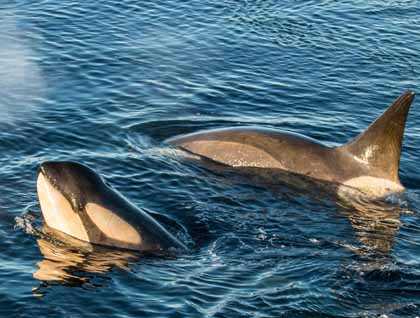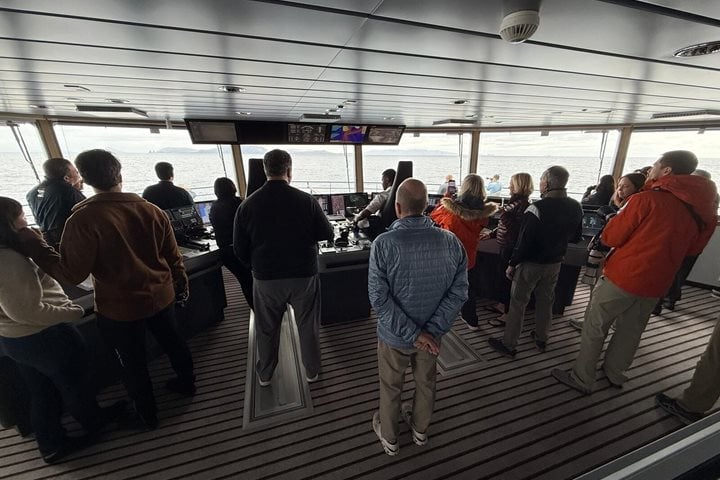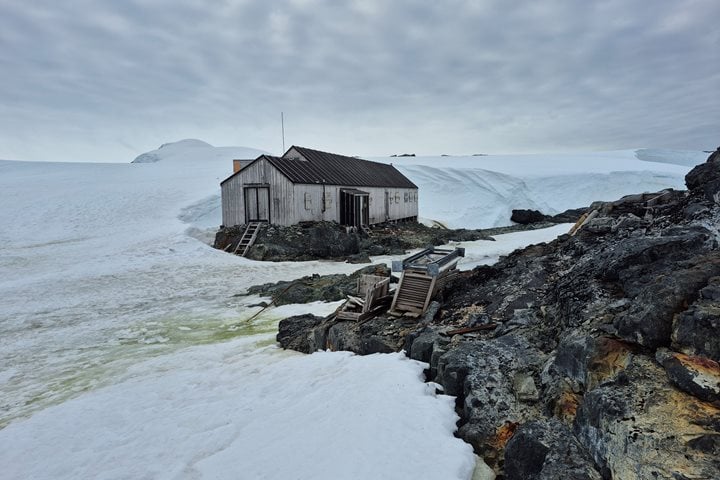Dawn in Antarctica is almost mythical, due in part to the fact that it occurs just a handful of short hours after sunset. This is fantastically described over breakfast to those that slept in, by the dedicated majority that have abandoned all hope of resting on this voyage and truly embraced the expedition mindset. Massive icebergs become blank canvases for the sun, gentle brushstrokes turning cool blue into blushing pink before washing the entire landscape in pure golden light. Rising from the horizon, our celestial artist adds nuances of shadow to this masterpiece, providing even more detail in which to bask. And then there are days like today that all of this just becomes merely a backdrop for something truly special, a large pod of killer whales.
The black and white colorations are so distinctive that there can be no mistake as to the identity of these marine mammals that are found in every ocean across the globe and considered to be the apex predator of our planet. Their physiology alone is enough for them to inspire a wondrous sense of awe, and to see them in these numbers and under these conditions is beyond fortunate. They are the largest of the dolphins, growing up to thirty feet in length, weighing in at an average of 10,000 pounds and with conical teeth the length of fingers. More impressive than their sheer brawn is the matriarchal social structure that allows advanced feeding techniques to be passed down through the generations. These specializations are so distinct that multiple eco-types have been identified and they do not intermingle genetically.
For those of us on the bow of the National Geographic Explorer, it is as if we were still dreaming, although the beyond brisk Antarctic air reminds us we are definitely not. Dorsal fins slice effortlessly through glassy waters, the abrupt and powerful exhalations can be clearly heard and on the occasional pass, inquisitive eyes can be seen, perhaps regarding us with a brain that far exceeds ours in size. Not to be left out of the cetacean sighting, a trio of humpback whales allows us to sidle up to them as they rest between dives. Then their dark blue blubberous bulk ever so gently descends into the still shadowy depths, arching bodies seeming to continuously slide downward. It is no stretch of the imagination to see how such sights spawned sailor legends of leviathans and sea monsters, but the truth is so much more magical and worth every minute of lost sleep. Hard to fathom that after all of this, the announcement we care least about is that breakfast is served.







